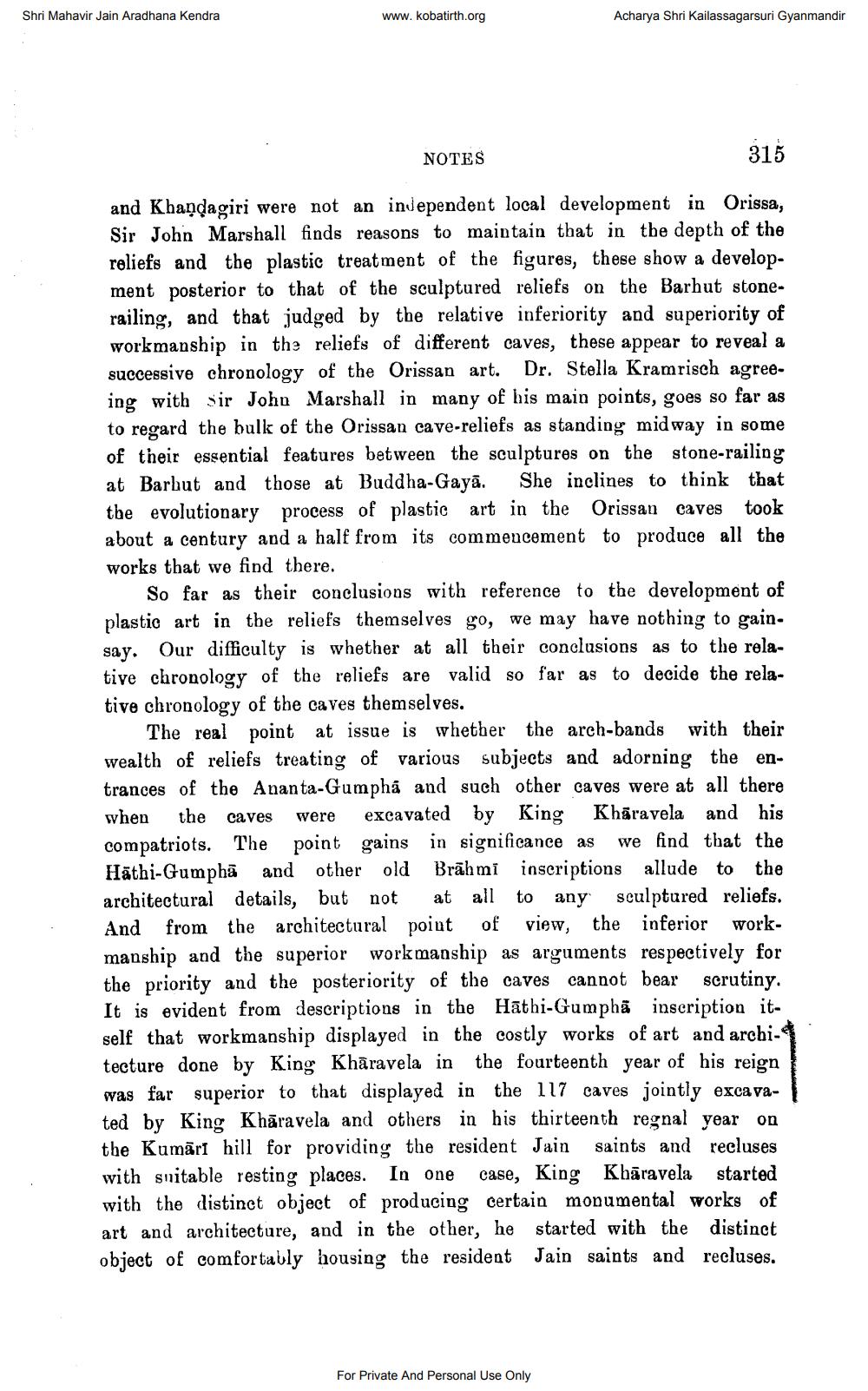________________
Shri Mahavir Jain Aradhana Kendra
www.kobatirth.org
Acharya Shri Kailassagarsuri Gyanmandir
NOTES
315
and Khaņdagiri were not an independent local development in Orissa, Sir John Marshall finds reasons to maintain that in the depth of the reliefs and the plastic treatment of the figures, these show a development posterior to that of the sculptured reliefs on the Barhut stonerailing, and that judged by the relative inferiority and superiority of workmanship in the reliefs of different caves, these appear to reveal a successive chronology of the Orissan art. Dr. Stella Kramrisch agreeing with sir John Marshall in many of his main points, goes so far as to regard the bulk of the Orissan cave-reliefs as standing midway in some of their essential features between the sculptures on the stone-railing at Barhut and those at Buddha-Gayā. She inclines to think that the evolutionary process of plastic art in the Orissan caves took about a century and a half from its commencement to produce all the works that we find there.
So far as their conclusions with reference to the development of plastic art in the reliefs themselves go, we may have nothing to gain. say. Our difficulty is whether at all their conclusions as to the relative chronology of the reliefs are valid so far as to decide the relative chronology of the caves themselves.
The real point at issue is whether the arch-bands with their wealth of reliefs treating of various subjects and adorning the entrances of the Ananta-Gumphã and such other caves were at all there when the caves were excavated by King Khāravela and his compatriots. The point gains in significance as we find that the Hāthi-Gumphā and other old Brāhmi inscriptions allude to the architectural details, but not at all to any sculptured reliefs. And from the architectural point of view, the inferior workmanship and the superior workmanship as arguments respectively for the priority and the posteriority of the caves cannot bear scrutiny. It is evident from descriptions in the Hathi-Gumphā inscription itself that workmanship displayed in the costly works of art and architecture done by King Khāravela in the fourteenth year of his reign was far superior to that displayed in the 117 caves jointly excavated by King Khāravela and others in his thirteenth regnal year on the Kumāri hill for providing the resident Jain saints and recluses with suitable resting places. In one case, King Khāravela started with the distinct object of producing certain monumental works of art and architecture, and in the other, he started with the distinct object of comfortably housing the resident Jain saints and recluses.
For Private And Personal Use Only




